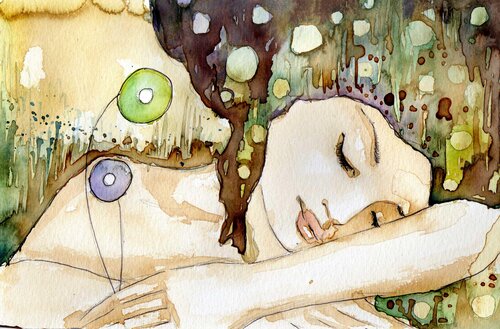Dream About Drawing: Unlocking the Canvas of Inner Desires
In the realm of artistry, drawing transcends mere depiction; it becomes a profound journey into the depths of the human experience. With each stroke of the pencil, artists navigate the intricate landscapes of emotion, charting a course through the vast terrain of the subconscious mind. From the expressive language of lines to the symbolic richness of shapes and colors, drawing offers a canvas upon which we can explore the depths of our innermost thoughts and feelings.
Within the tapestry of our drawings lies a symphony of symbolism, each element carrying with it layers of meaning and significance. As we decipher these symbols, we unlock hidden truths about ourselves and the world around us, gaining insight into our fears, desires, and aspirations. It’s through this exploration of symbolism that we connect with our inner muse – that wellspring of creativity and inspiration that fuels our artistic endeavors.
| Topic | Key Points |
|---|---|
| Emotional Landscapes and Drawing | – Drawing provides a non-verbal outlet for expressing emotions. |
| – It can be therapeutic for processing emotions and finding catharsis. | |
| Exploring Symbolism in Drawing | – Symbolism adds depth and meaning to artwork. |
| – Symbols can represent abstract concepts, emotions, or cultural themes. | |
| Connecting with Your Inner Muse | – An inner muse is a source of inspiration and creativity within individuals. |
| – Strengthening the connection involves mindfulness, self-reflection, and creative practices. | |
| Transforming Dreams into Reality | – Drawing serves as a tool for visualizing goals and aspirations. |
| – It facilitates the transformation of dreams into reality through visualization and action. |
Embracing the Language of Lines
The Power of Precision:
Lines, in their simplicity, hold profound significance in the world of drawing. Each stroke of the pencil carries with it a unique energy, a distinct intention. From the sharpness of a straight line to the fluidity of a curve, every mark we make communicates something about our thoughts, emotions, and experiences.
Expressive Versatility:
Just as words can convey a multitude of meanings depending on their arrangement, lines possess a remarkable versatility in their expression. They can be bold and assertive, capturing the strength of conviction, or soft and delicate, conveying the subtlety of nuance. By embracing the language of lines, we open ourselves up to a world of expressive possibilities.
Conveying Emotion:
In the art of drawing, lines serve as conduits for emotion, channeling our innermost feelings onto the canvas. A jagged line may express turmoil or unrest, while a gentle curve can evoke serenity and calm. By paying attention to the quality and direction of our lines, we can infuse our artwork with depth and meaning, inviting viewers to connect on an emotional level.
The Subconscious Symphony of Shapes
Symbolism in Form:
Shapes are more than mere geometric constructs; they are vessels of symbolism, rich with meaning and significance. Circles represent unity and wholeness, squares denote stability and structure, while triangles evoke balance and harmony. In the subconscious mind, these shapes intertwine to form a symphony of symbols, each resonating with a different aspect of our psyche.
Unconscious Expression:
When we engage in the act of drawing, we often find ourselves instinctively creating certain shapes without conscious thought. These spontaneous gestures reveal hidden aspects of our psyche, offering insights into our fears, desires, and aspirations. By paying attention to the shapes that emerge in our artwork, we can uncover truths about ourselves that may have otherwise remained buried.
Integration of Imagery:
In the subconscious mind, shapes blend and merge to form intricate patterns and motifs, weaving together the fabric of our dreams and desires. Just as a composer orchestrates a symphony, our subconscious mind arranges these shapes into a harmonious composition, each element contributing to the overall narrative of our inner world. By exploring the subconscious symphony of shapes, we gain a deeper understanding of ourselves and our place in the universe.
Colors That Speak Volumes
Emotional Resonance:
Colors have a profound impact on our emotions, evoking feelings of joy, sadness, excitement, or tranquility with just a glance. Each hue carries its own unique energy, its own story to tell. Whether vibrant and bold or soft and muted, colors speak volumes about our innermost thoughts and feelings, revealing truths that words alone cannot express.
Psychological Significance:
The study of color psychology reveals the profound influence that colors can have on our moods and behaviors. Red may ignite passion and energy, blue may evoke a sense of calm and introspection, while yellow may inspire creativity and optimism. By understanding the psychological significance of colors, we can harness their power to express ourselves more authentically and connect with others on a deeper level.
Symbolism in Spectrum:
In addition to their emotional and psychological impact, colors also carry symbolic meanings that vary across cultures and traditions. White may symbolize purity and innocence, black may represent mystery and power, while green may signify growth and renewal. By incorporating these symbolic meanings into our artwork, we can imbue it with layers of depth and complexity, inviting viewers to explore its hidden significance.
Sketching Your Deepest Desires
Visionary Exploration:
When we engage in the act of drawing, we embark on a journey of self-discovery, uncovering hidden truths about ourselves and our deepest desires. Whether we realize it or not, each stroke of the pencil brings us one step closer to manifesting our dreams into reality. By sketching our deepest desires, we give them form and substance, turning abstract thoughts into tangible creations.
Creative Manifestation:
Drawing is a powerful tool for manifestation, allowing us to visualize our goals and aspirations with clarity and precision. Whether it’s a dream career, a loving relationship, or inner peace and fulfillment, the act of sketching brings our desires into sharper focus, making them more attainable and achievable. Through drawing, we affirm our intentions to the universe, setting the stage for their eventual realization.
Expressive Catharsis:
In addition to its manifesting power, drawing also serves as a form of emotional catharsis, enabling us to release pent-up emotions and frustrations in a constructive way. Whether we’re grappling with feelings of fear, doubt, or uncertainty, the act of sketching allows us to externalize these emotions, transforming them into works of art that reflect our innermost struggles and triumphs.
Drawing Out Emotional Landscapes
The Canvas of Emotion:
Drawing is not just about creating visual representations; it’s a profound journey into the landscapes of our emotions. Each stroke of the pencil carries with it the weight of our feelings, mapping out the contours of our inner world on the canvas before us.
Expressive Terrain:
Just as a landscape artist captures the beauty of nature, we too can depict the emotional terrain of our inner landscape through drawing. Whether it’s the peaks of joy, the valleys of sorrow, or the rivers of resilience, every element we sketch tells a story of our innermost experiences and struggles.
Release and Reflection:
In the act of drawing out emotional landscapes, we find release and reflection. By externalizing our emotions onto paper, we gain perspective on our feelings, allowing us to process and make sense of them in a tangible way. It’s a form of catharsis that brings clarity and healing to the soul.
Exploring the Depths of Symbolism
Language of the Subconscious:
Symbols are the currency of the subconscious mind, conveying complex ideas and emotions with simplicity and clarity. In the world of drawing, symbols abound, each carrying its own unique meaning and significance. By exploring the depths of symbolism, we uncover hidden truths about ourselves and the world around us.
Interpretive Insight:
Every line, shape, and color in our artwork holds symbolic potential, waiting to be deciphered by those with eyes to see. Whether it’s a recurring motif or a subtle metaphor, these symbols offer insights into our fears, desires, and aspirations. By learning to interpret the symbolism in our art, we gain a deeper understanding of ourselves and our place in the universe.
Universal Language:
Symbols transcend language and culture, speaking to the universal truths of the human experience. Whether it’s the ancient symbolism of the mandala or the modern iconography of street art, symbols have the power to unite us in a shared understanding of what it means to be human. By exploring the depths of symbolism, we tap into a wellspring of collective wisdom that spans the ages.
Connecting with Your Inner Muse
Source of Inspiration:
Within each of us lies an inner muse – a wellspring of creativity and inspiration waiting to be tapped into. When we connect with our inner muse, we unlock a reservoir of ideas and insights that fuel our artistic endeavors and enrich our lives.
Creative Communion:
Drawing is not just a technical skill; it’s a form of communion with our inner muse. When we surrender to the flow of inspiration, we enter into a state of creative flow where ideas flow freely and effortlessly. It’s in these moments of connection that our true artistic voice emerges, guiding us towards new heights of expression and innovation.
Nurturing the Creative Spirit:
Connecting with our inner muse is a form of self-care that nourishes the creative spirit within us. Whether it’s through meditation, journaling, or simply spending time in nature, nurturing our connection to our inner muse allows us to replenish our creative energy and overcome artistic blocks. It’s a reminder that creativity is not just a skill to be mastered, but a gift to be cherished and cultivated.
Transforming Dreams into Reality
Visionary Potential:
Drawing has the power to transform our dreams into reality, bridging the gap between imagination and manifestation. Whether it’s a vision for our personal growth, a creative project, or a larger goal for the future, the act of sketching brings our aspirations into sharper focus, making them more tangible and achievable.
Actionable Visualization:
By sketching our dreams, we create a visual roadmap for success, outlining the steps we need to take to turn our aspirations into actualities. Whether it’s breaking down a larger goal into manageable tasks or visualizing the end result, drawing allows us to clarify our intentions and take decisive action towards realizing our dreams.
Empowerment Through Creation:
Drawing is a form of empowerment that allows us to take ownership of our dreams and aspirations. When we transform our ideas into tangible creations, we affirm our ability to shape our own destiny and create the life we desire. It’s a reminder that we have the power to turn our dreams into reality, one sketch at a time.
Final Thought:
As our journey through the world of drawing comes to a close, we find ourselves enriched by the depth of emotional exploration, the richness of symbolism, and the profound connection with our inner muse. Through the act of drawing, we have traversed the landscapes of our emotions, mapping out the contours of our inner world with each stroke of the pencil.
In our exploration of symbolism, we have uncovered hidden truths about ourselves and the world around us, gaining insight into the intricate tapestry of the human experience. Symbols have become our guides, leading us on a journey of self-discovery and creative expression.
FAQs:
Q: How does drawing help in expressing emotions? A: Drawing provides a non-verbal outlet for expressing emotions. Through the use of lines, shapes, and colors, artists can convey a wide range of feelings and experiences on paper.
Q: Can drawing be therapeutic for processing emotions? A: Yes, drawing can be highly therapeutic for processing emotions. It allows individuals to externalize their feelings, gain perspective on their experiences, and find catharsis through creative expression.
Q: What role does symbolism play in drawing? A: Symbolism adds depth and meaning to artwork by imbuing it with layers of significance. Symbols can represent abstract concepts, convey emotions, or communicate cultural and societal themes.
Q: How can one incorporate symbolism into their drawings? A: Artists can incorporate symbolism into their drawings by using recognizable symbols or creating their own visual metaphors. By choosing symbols that resonate with their intended message, artists can enrich the meaning of their artwork.
Q: What is an inner muse? A: An inner muse is a metaphorical source of inspiration and creativity that resides within each individual. It’s the intuitive force that guides artistic expression and fuels the creative process.
Q: How can one strengthen their connection with their inner muse? A: Strengthening the connection with one’s inner muse involves practices such as mindfulness, self-reflection, and engaging in activities that nourish creativity. By listening to intuition and trusting the creative process, individuals can deepen their connection with their inner muse.
Q: Can drawing help in achieving goals and aspirations? A: Yes, drawing can serve as a powerful tool for visualizing goals and aspirations. By sketching out dreams and aspirations, individuals can clarify their intentions, set actionable steps, and manifest their desired outcomes.
Q: How does drawing facilitate the transformation of dreams into reality? A: Drawing facilitates the transformation of dreams into reality by providing a tangible visual representation of goals and aspirations. Through the act of drawing, individuals can harness the power of visualization, strengthen their commitment to their dreams, and take inspired action towards their realization.







